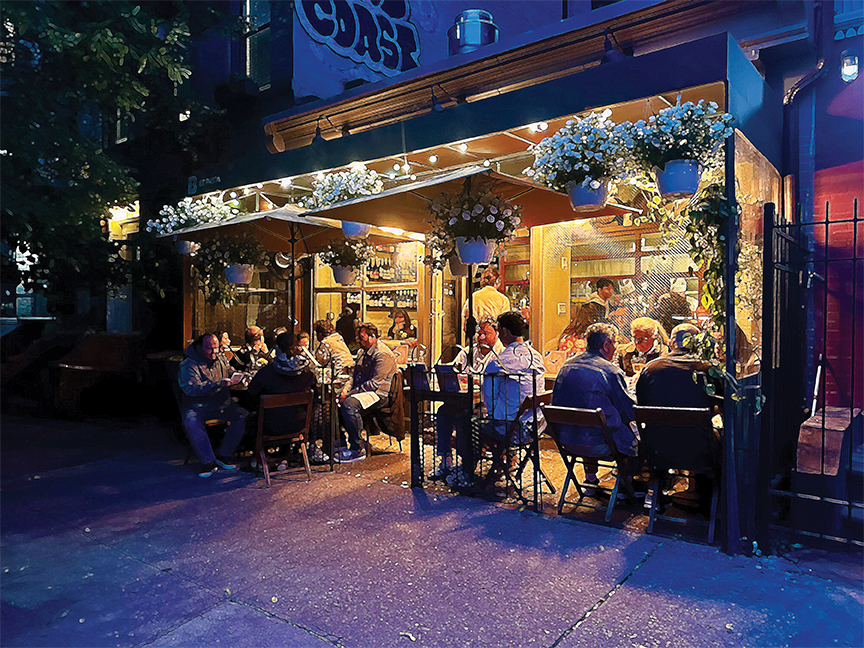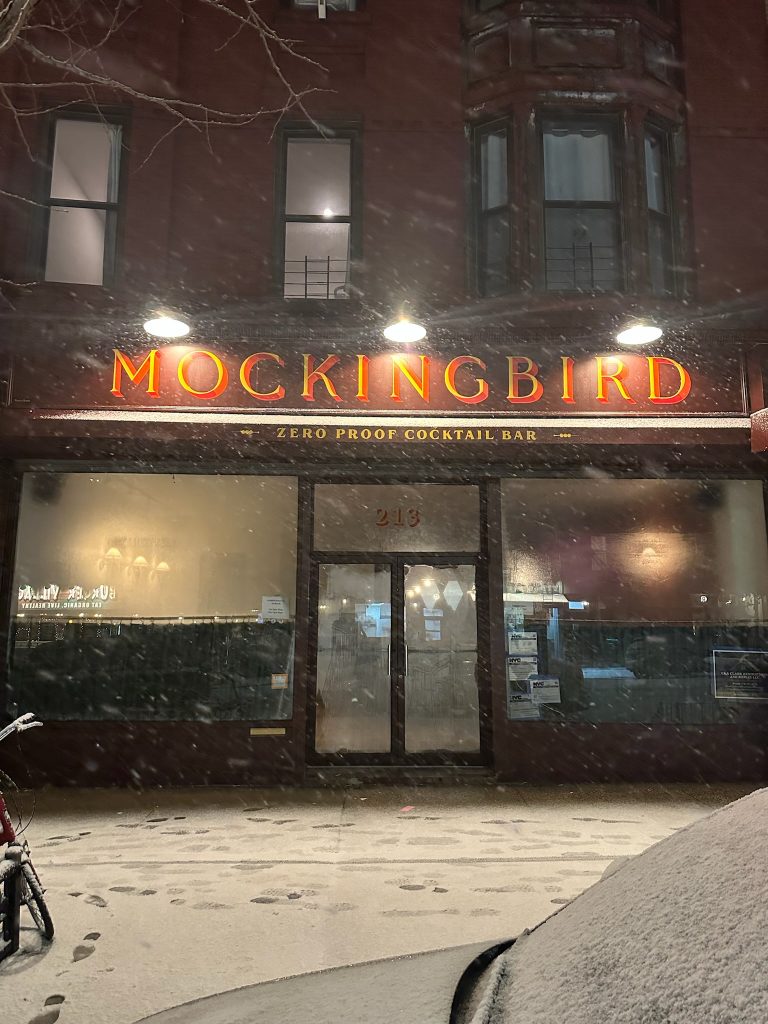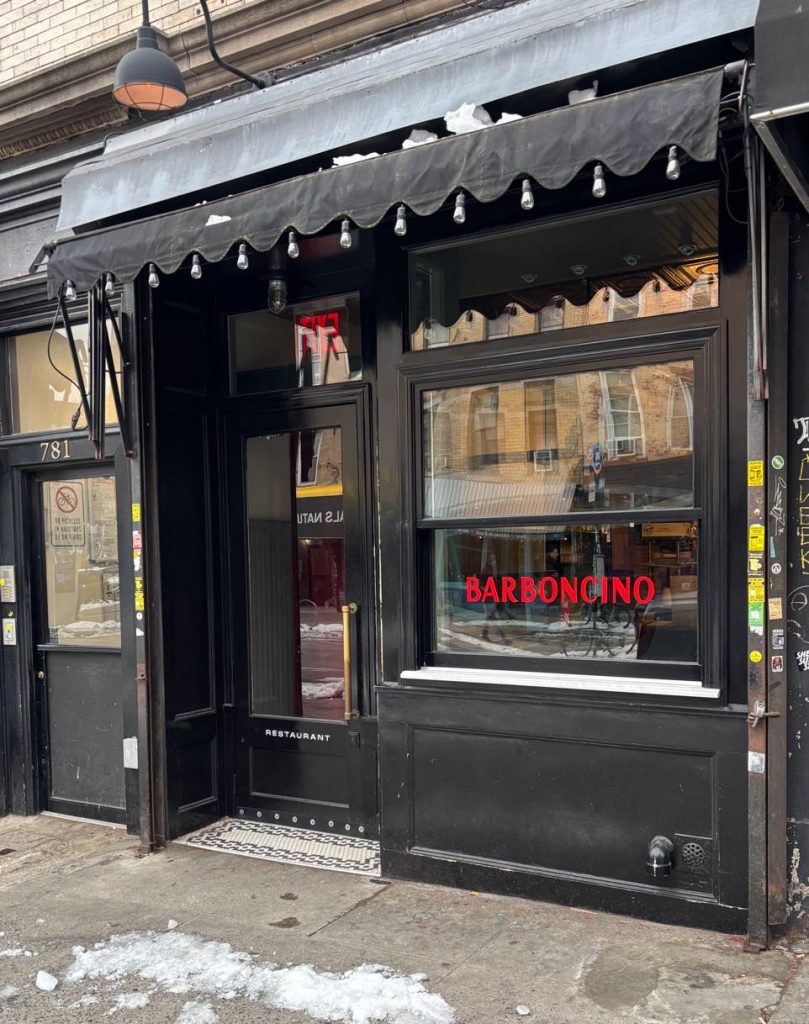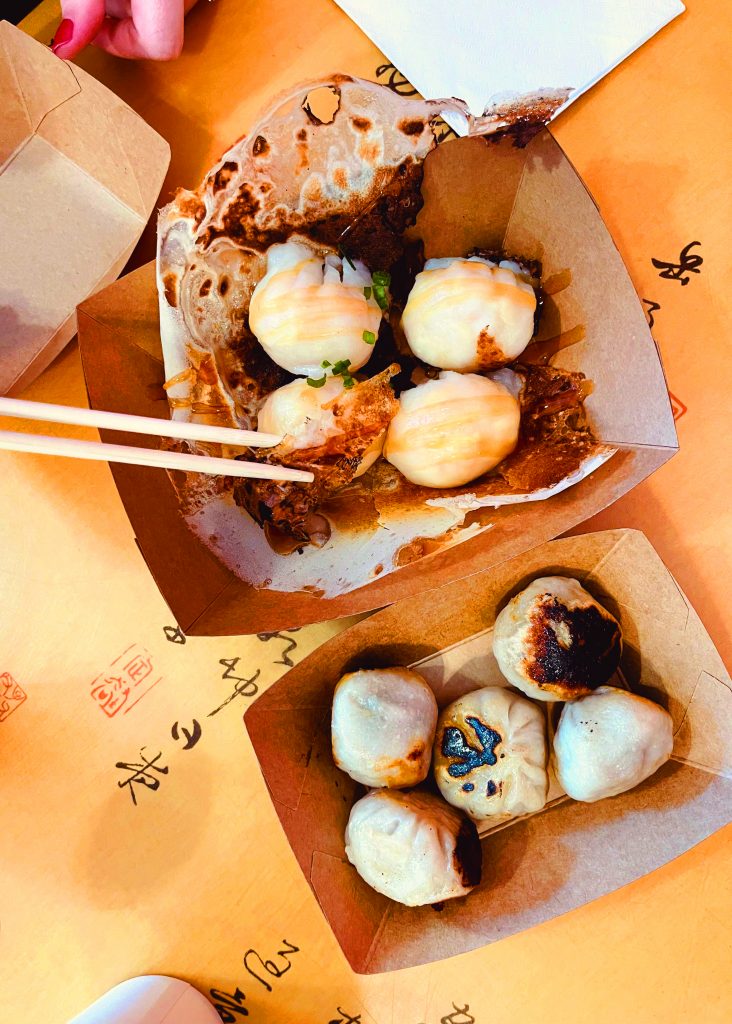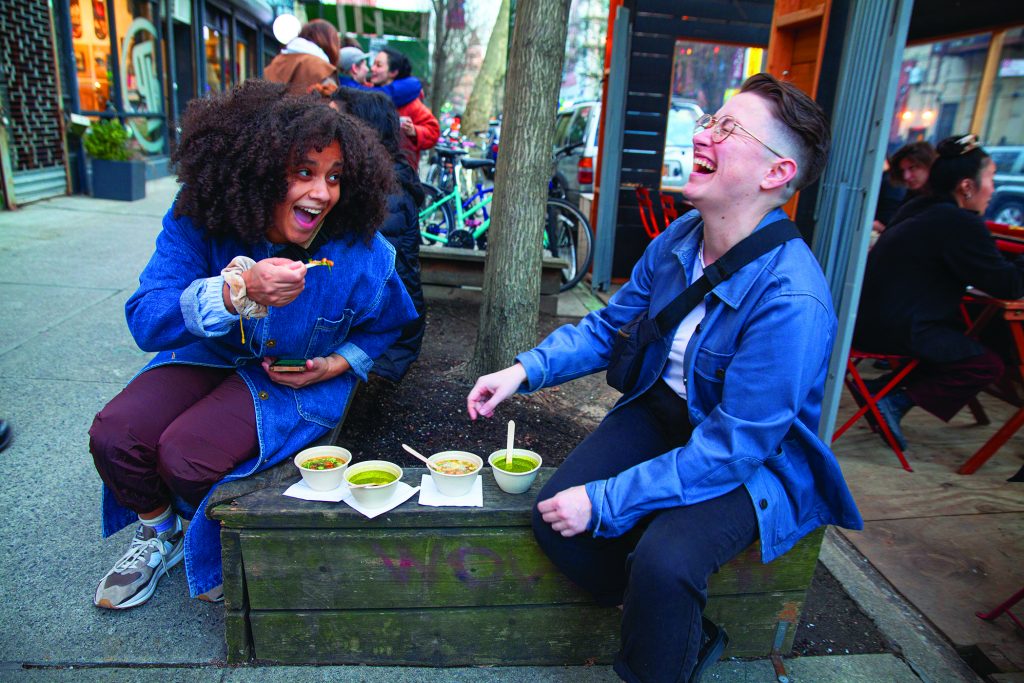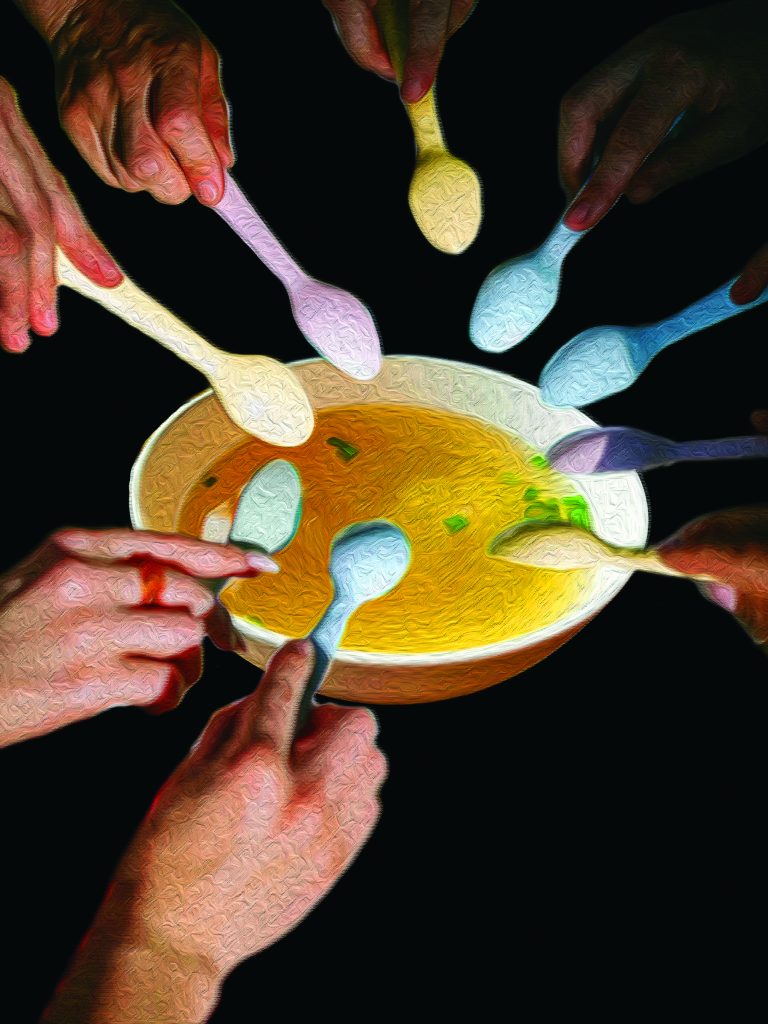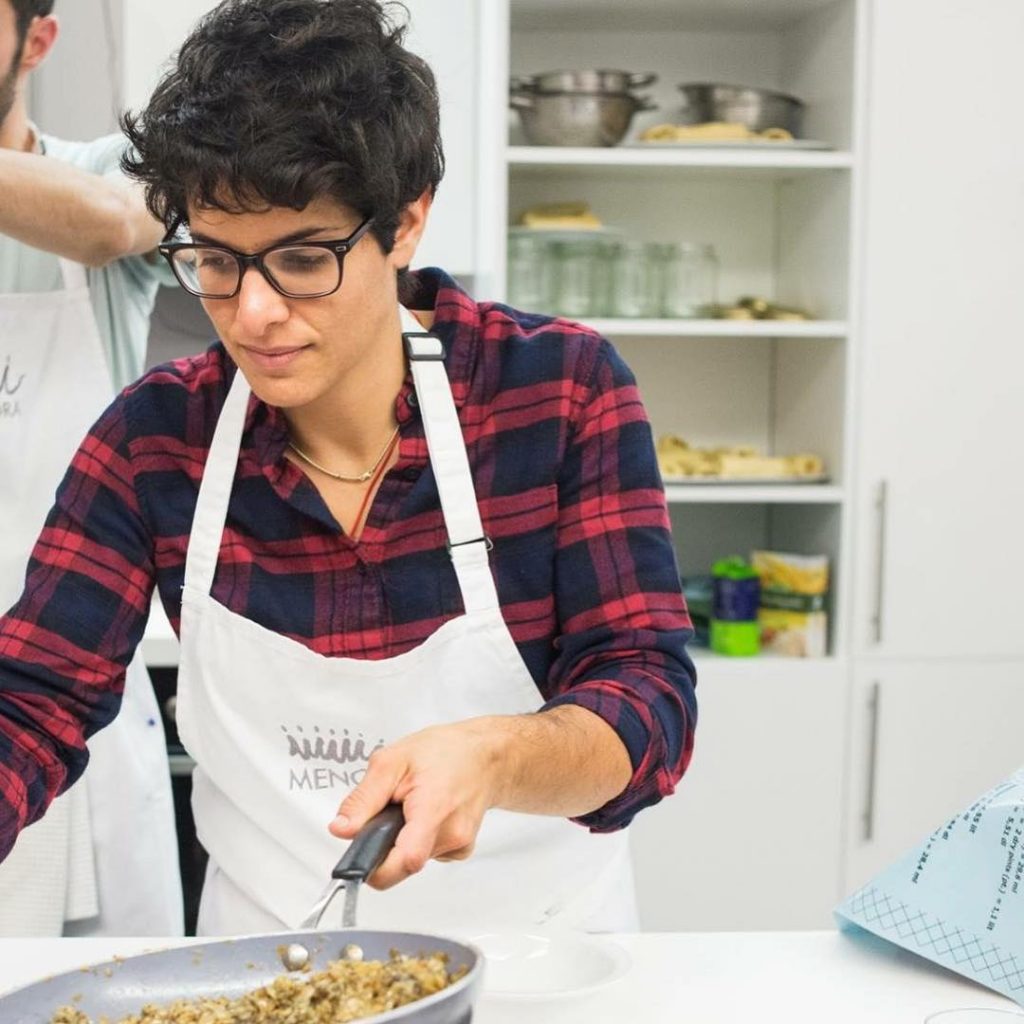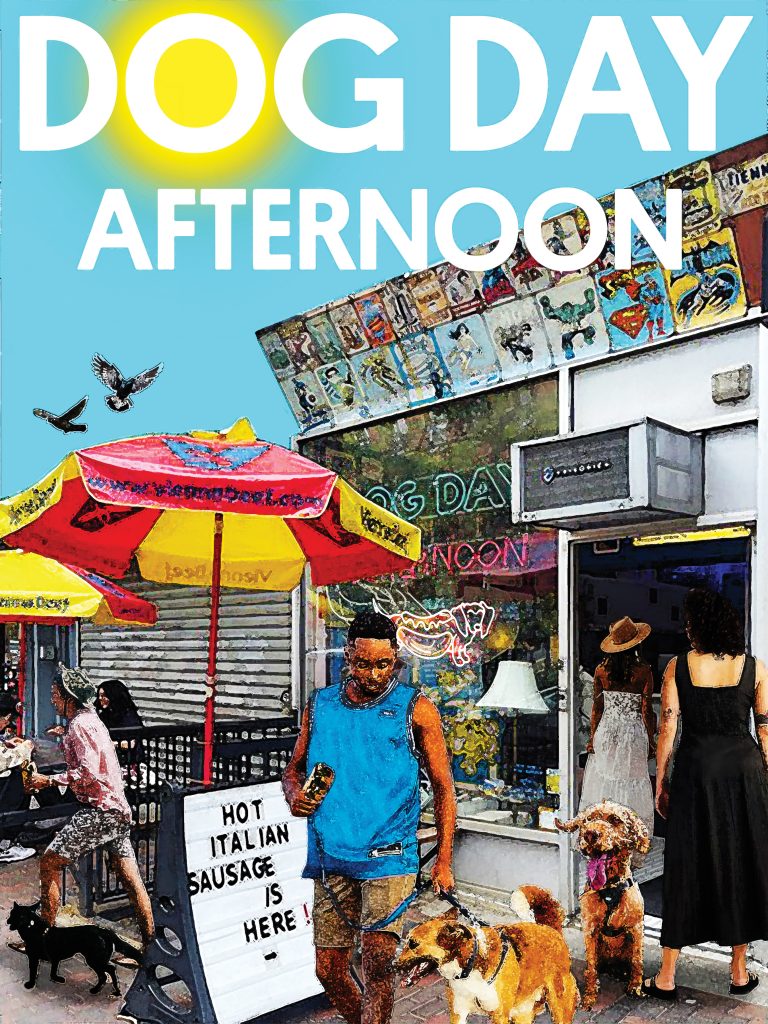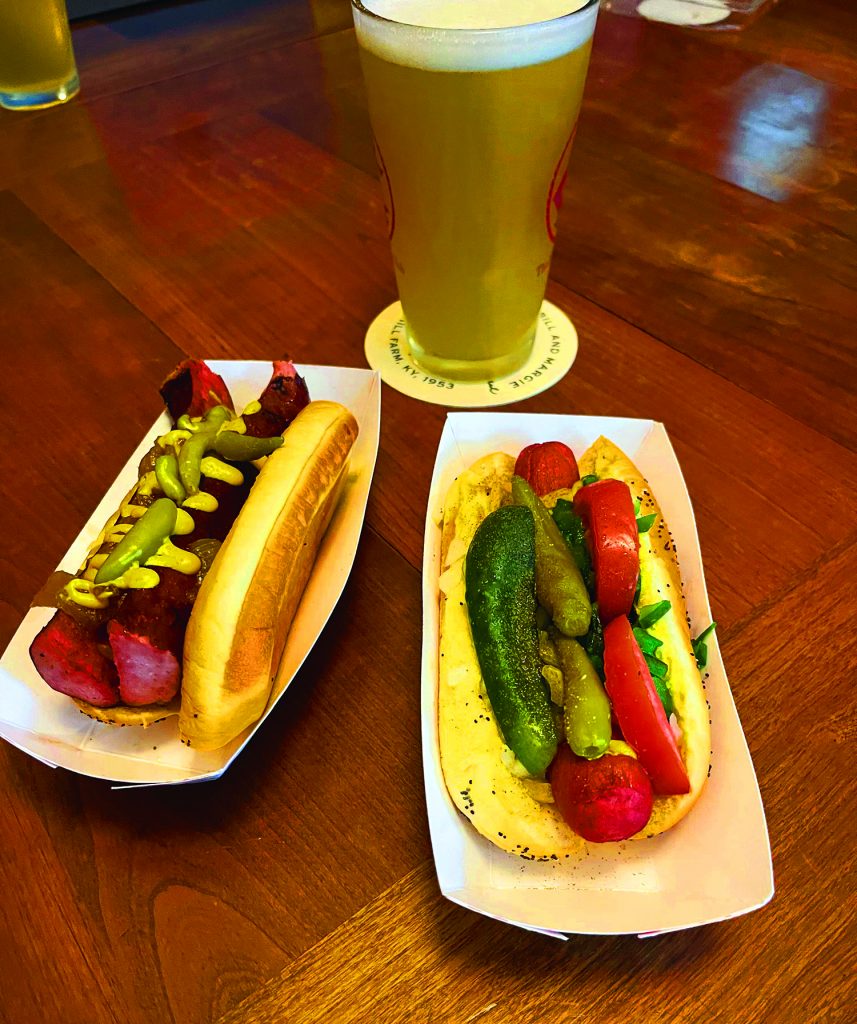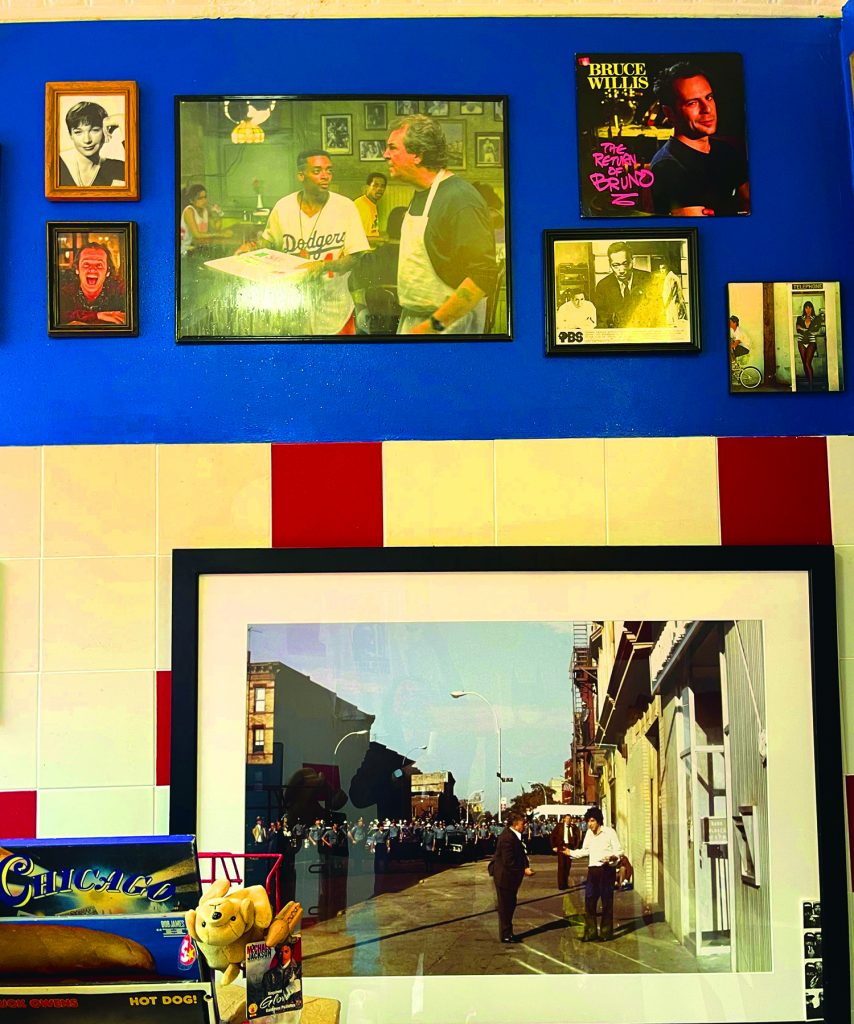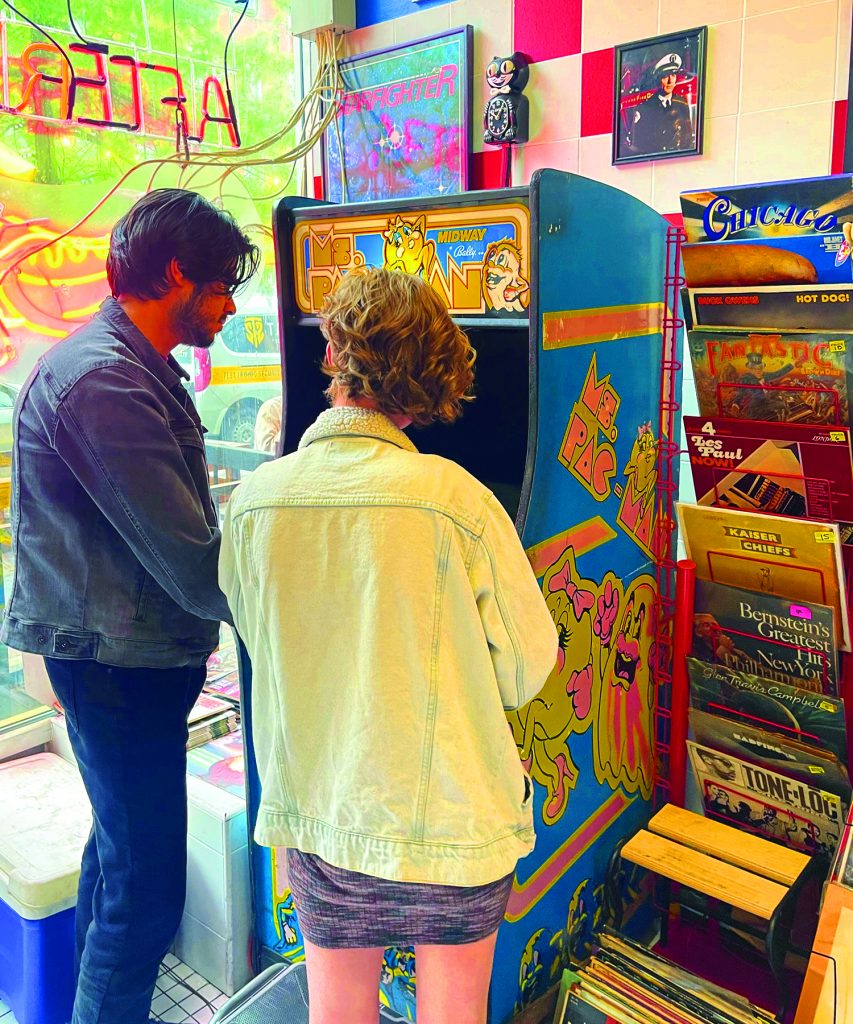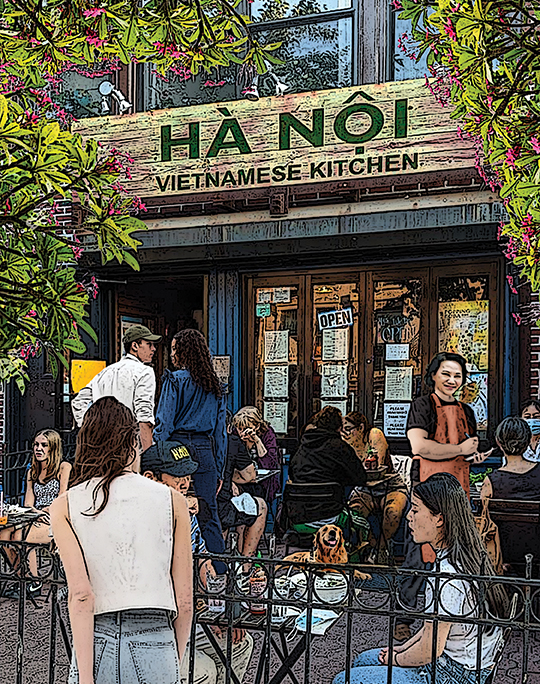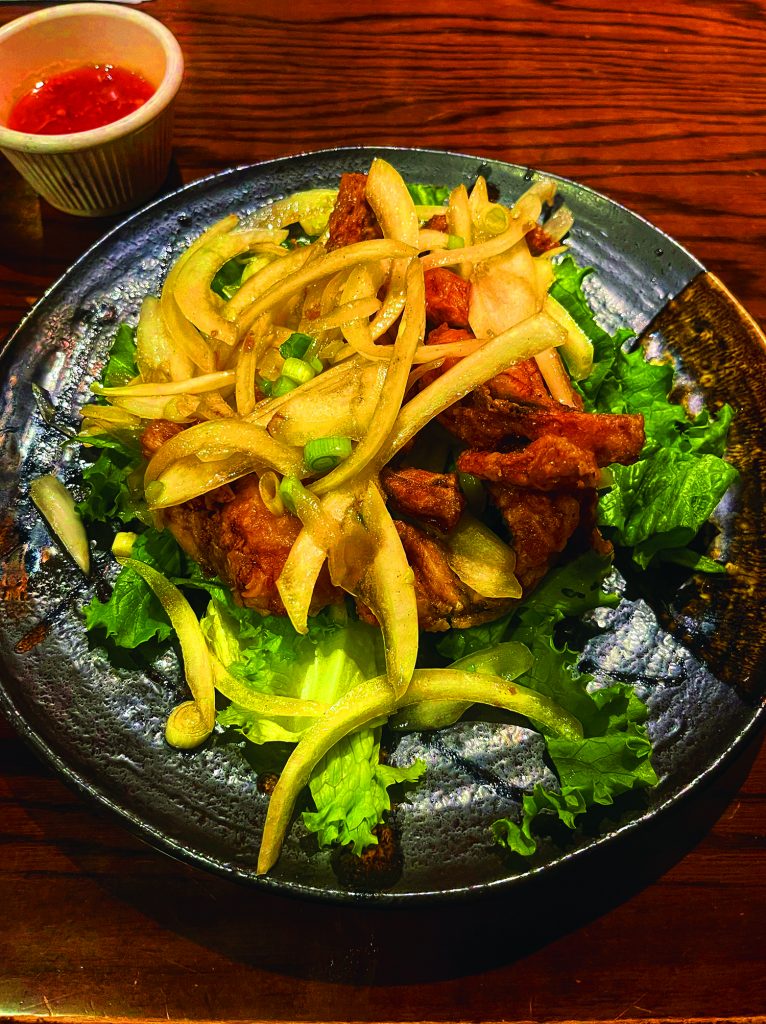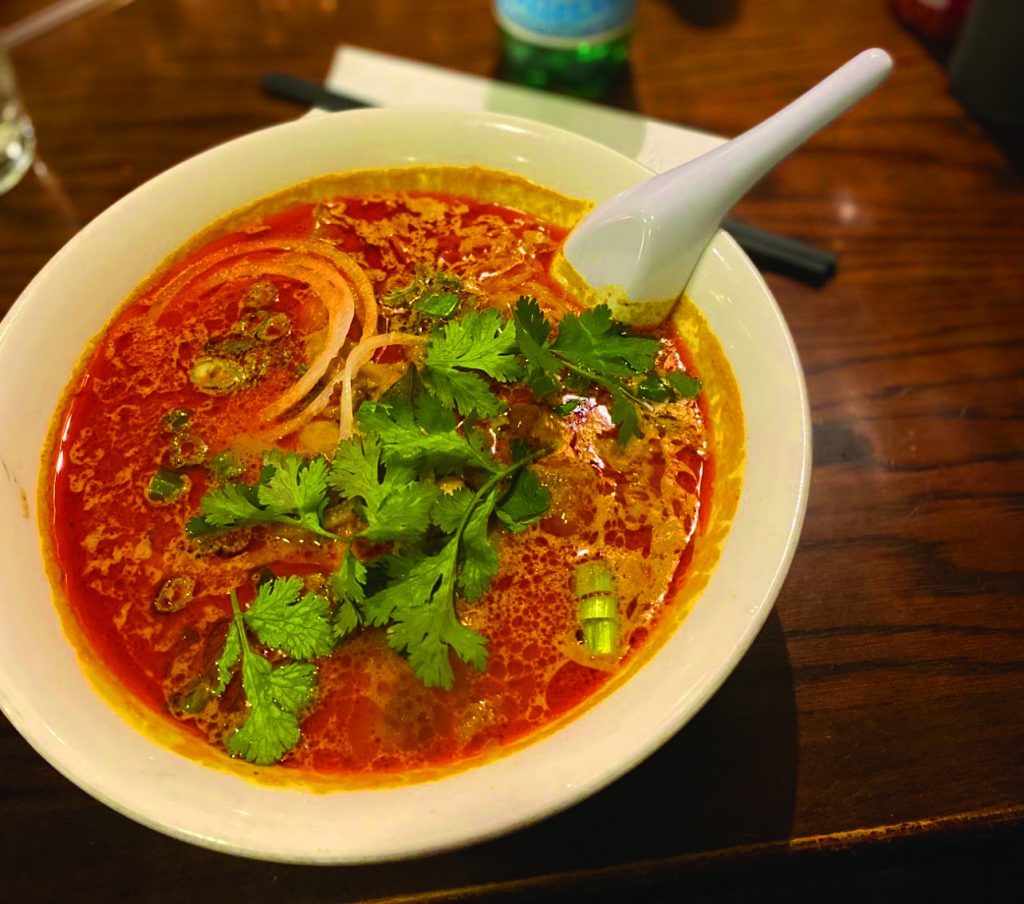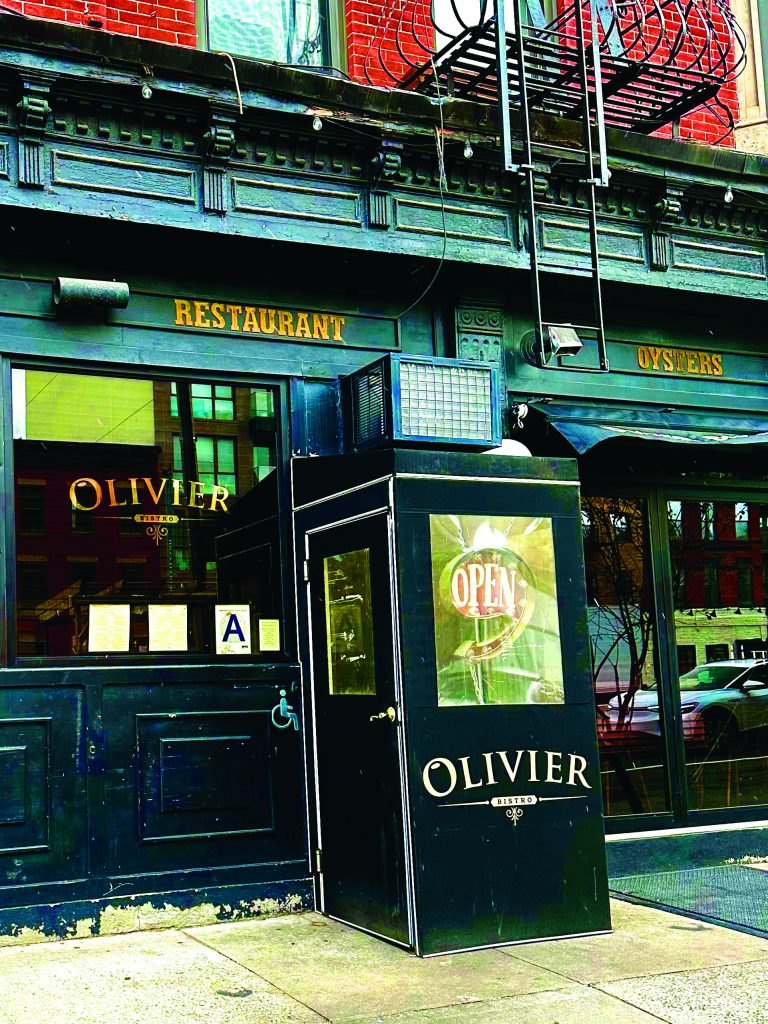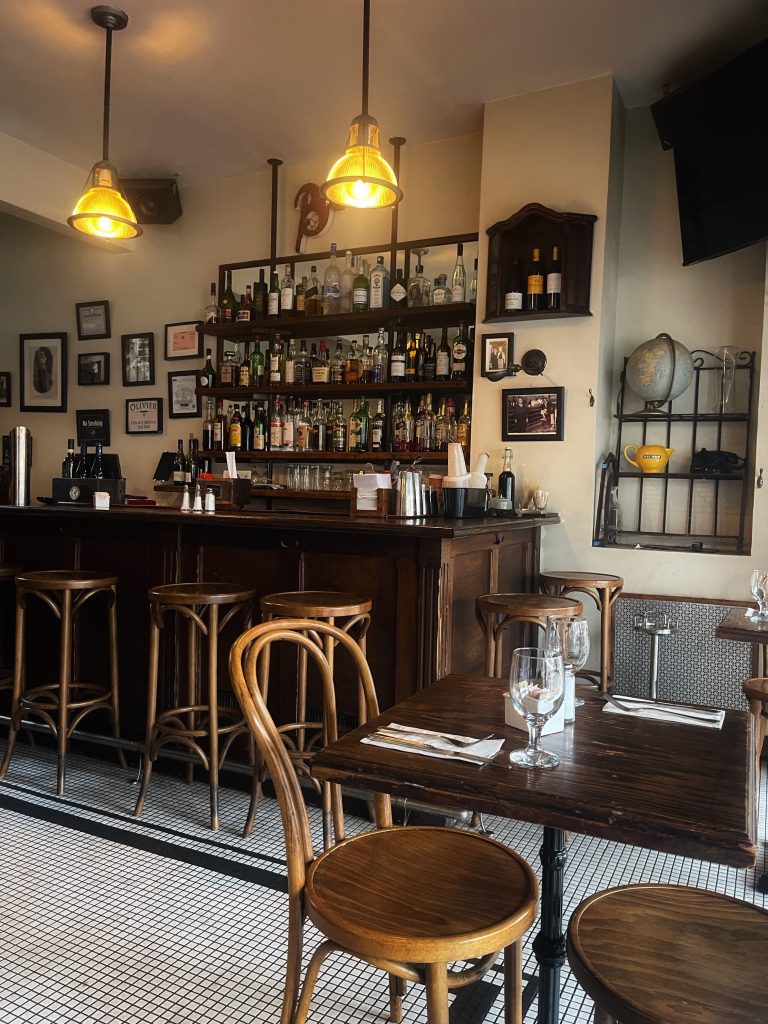What you need to know about this unique dining experience.
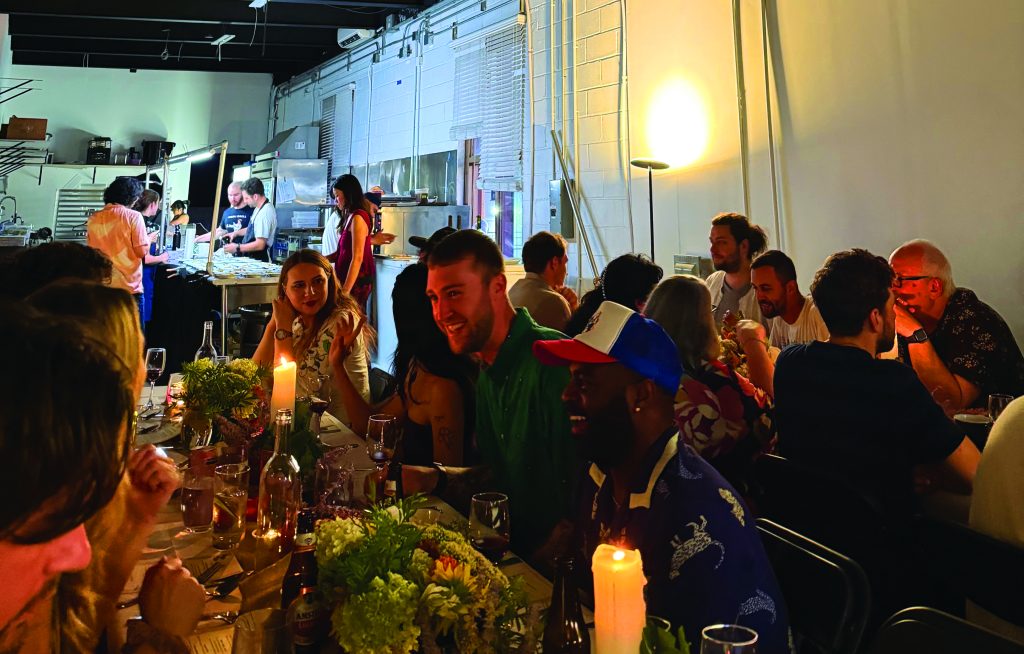
For this season’s issue, I wanted to do something a little different from the usual restaurant review. Instead of featuring a brick-and-mortar dining room, my wife and I found ourselves walking into a nondescript Williamsburg warehouse at seven o’clock sharp on a recent evening. We came bearing an invitation from Dan Mollitor, the passionate Chef and prime mover behind @DM_dinners, an enigmatic and intriguing contender for the NYC supper club movement.
F
or a moment, we weren’t entirely sure we had the right address. The block was quiet, the exterior unmarked. But then two other guests arrived at the door at the same time as us, and we exchanged a small, relieved laugh — clearly, we weren’t the only ones wandering toward an evening of mystery.
Inside, the experience began not with white tablecloths or a maître d’, but with a climb up two flights of narrow industrial-chiq stairs. At the landing of the first flight we were greeted by a cheerful and diligent hostess, who confirmed our reservation and asked if we had signed up for the wine pairing. We had, and she handed us three colored tickets, explaining that at various points during the dinner we’d hold them up as signals for the staff to bring the appropriate glass to match each course. With tickets in hand, she ushered us up a second flight, inviting us to enjoy pre-drink cocktails on the rooftop.
We emerged into a bright, airy rooftop space, a warm late-summer light stretching across the commingled skylines of Manhattan and North Williamsburg. As the DJ spun upbeat tunes, cocktails were offered by a friendly cash bartender, and guests mingled easily. The vibe almost immediately was reminiscent of a housewarming party for your coolest friend. The mood was bright and expectant — strangers clustered together, introducing themselves and speculating about what was in store. Most of the folks we met were just as excited as us to be experiencing something like this for the first time.
Supper clubs occupy this fascinating space between restaurant and dinner party. At their simplest, they’re privately run dinners, usually in intimate settings, often for medium or large groups. Many have social media followings and mailing lists; if you want to attend, you sign up, wait for the announcement, and hope to snag a spot. They’re more DIY and less formal than restaurants — sometimes improvised, sometimes polished — but they can also feel more personal, more special, precisely because they’re fueled by the host’s own passion for the craft of a single night.
There’s even a bit of historical resonance in these gatherings. Modern restaurants themselves trace their origins back to revolutionary France, when the third estate began democratizing the idea of lavish royal banquets. What had once been the exclusive province of the palace — the grand dinner party, a display of abundance and refinement — was reimagined as something accessible to the emerging middle and merchant classes. By stripping away the palace intrigue and opening the table to anyone with a ticket, early restaurateurs built a new kind of institution. Supper clubs, in many ways, represent the bridge in this evolution. You see we did not just go from the halls of Versailles, to the ceilings of Eleven Madison Park overnight.
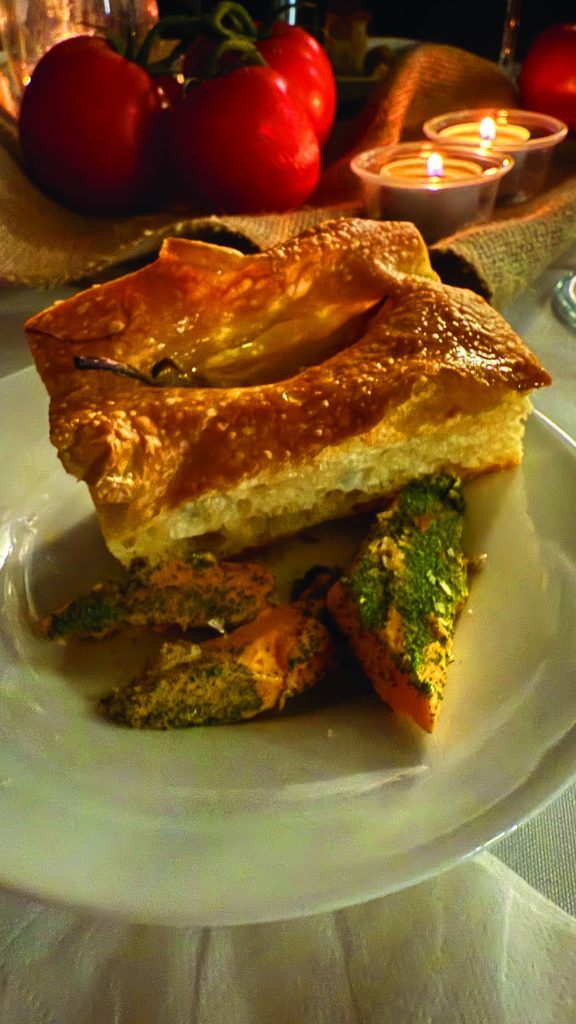
No, the concept of the modern restaurant, no doubt began with a cadre of passionate French eaters, whos new found middle-class footing, and shared dream of some feverish democratized opulence, led them to cobble together their gastronomic dreams in small repurposed parlours, where the end goal was to share a meal with friends. A sort of delicious and perverse farewell toast to their fallen aristocratic forbearers.
That night with DM Dinners, the democratic heart of group dining was certainly on full display.
Following Pre-dinner drinks on the rooftop, as the summer sun began to settle over a mountain range of steel and concrete, we shared a toast with our host, before he invited us downstairs.
I, along with sixty or so guests, emerged into a large open floor studio where 4 long banquet tables awaited, and a full staff of cooks and waiters stood to greet us.
We each found our seats, taking in the tables, candle-lit, covered in handmade floral arrangements, burlap, and fresh garden tomatoes.
One brief eloquent introduction from Dan, to our staff and cooks for the evening, a quick and efficient reminder about the wine pairing system, and the meal began.
For our starter, vivid Cucumber Watercress Vichyssoise — pronounced “vishy-swah” for those curious — a creamy, chilled soup topped with lemongrass and toasted walnuts. Cool, herbaceous, and faintly nutty, it felt like a whisper of freshness; an appropriate opening to the evening’s digestion.
Next came the Prime Beef Tartare Tostada: tender diced morsels of raw beef, perched atop crisp oversized, homemade russet potato chips, and drizzled in a balsamic plum sauce. It was playful — part fine dining, part bar snack — and based on the chatter around us, the dish went over very well. This was also the first of our courses to feature a wine pairing, a light dry red, of which I am ashamed to say I did not pay close enough attention to the label. I had been too distracted at the time by the lovely novelty of it all, and the engaging conversation with my fellow dinner guests. What I can say about the pairing, was that it was tasty and well balanced, the ticket system having shown itself rather ingenious for servicing a crowd of this size..
Then, the course that stopped conversation: Bread-Butter-Bones. Where most restaurants treat bread as background, this evening it was featured among the main acts. A confit Japanese turnip focaccia from the talented baker at @ivos_loves, studded with sweet and savory lacto-fermented tomato, arrived alongside bone marrow butter so rich it practically begged to be spread with abandon. My wife loved it so much she later left a single-line review on DM Dinners’ Instagram: “I still dream of that bread 🤤.”
For me, though, the hidden favorite of the night was the Lasagna Verde — crisp and tender layers of fresh pasta, ricotta, and grilled farmers’ market vegetables, stacked into one of the most memorable lasagnas I’ve ever eaten, and paired well with a cool mineral white wine.
The savory arc concluded with Sunflower Monkfish, sweet and tender, its texture reminiscent of lobster, paired with cherry sauce, sunchoke, and sunflower brittle. Gentle and thoughtful, it grounded the evening before dessert lifted it again.
The finale was whimsical: a Banoffee “Pie” with banana-peanut custard, Nilla streusel, and Benton’s bacon crumble — sweet, salty, and reminiscent of a dessert you would eat at your grandmother’s house as a kid. Platters of handmade mochi circled the tables, and the room’s energy turned giddy, the wine and cocktails no doubt having their effect. When we were invited back to the rooftop for a cash-bar after-party, no one seemed ready to leave and in fact my wife and I, well past our witching hour, and with a dog waiting for us at home, simply lost track of the hours.
A week later, I found myself replaying the night for anyone who would listen, trying to explain how singular the experience felt. It wasn’t just the food, though the food was excellent. It was the sense of being part of a “gastronomic theater,” as I started calling it. Here the unmistakable and rare passion of a few individuals were on full display, allowing for a brief evening, the common masses, to share in the gilded inspiration, what Epicurus called “the art of living well.” Whether he knew it or not Dan Mollitor and his team cast shadows of Versailles, of the Rue Cler, in the flickering candlelight, on the high industrial ceiling of that WIlliamsburg loft. What he and his compatriots had achieved is closer to the roots of fine dining, than any commercial establishment reasonably ever can be.
I wanted to know more about the man behind the vision.
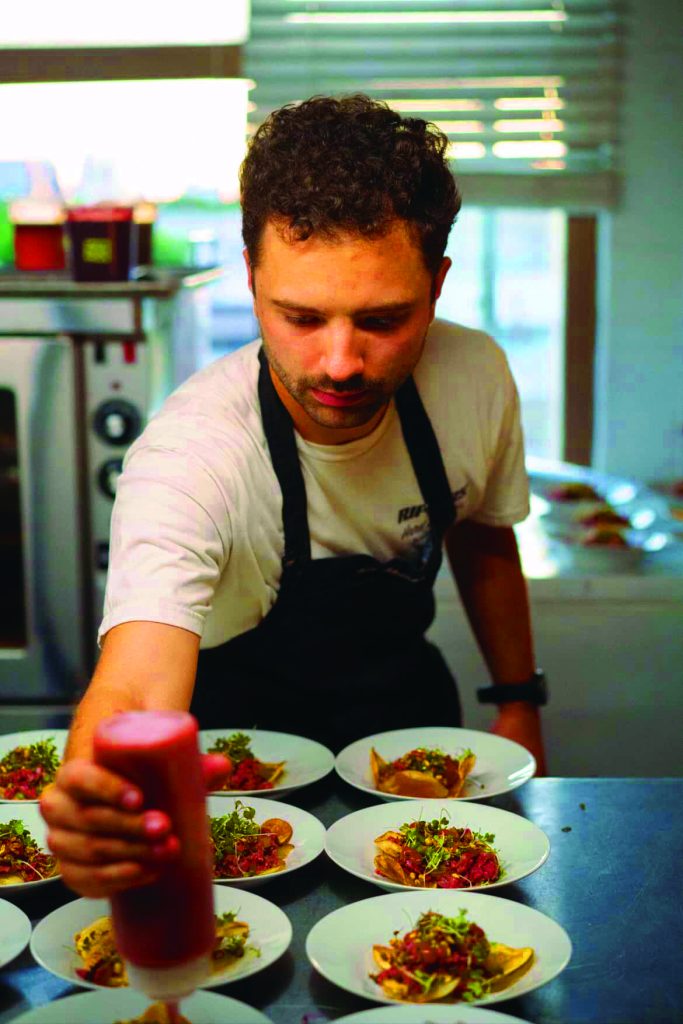
The Teacher-Chef Behind DM Dinners
“I’ve always wanted to cook,” Dan Mollitor told me when I reached out. “Growing up in a restaurant family, my parents did all they could to steer me clear from the food industry. My pursuit of a career in education has been my attempt at finding a ‘normal’ work life balance.”
Today, Mollitor works full-time as a public school science teacher — and runs DM Dinners in his off hours. “Although I work full-time as a teacher, I’ve worked in professional kitchens in various capacities for the last 13 years. Whether in the classroom or from the kitchen, I get a lot of fulfillment out of working directly to bring joy to someone. Besides getting a lot less sleep than I probably should, I consider myself fortunate enough to love not only one, but two jobs.”
DM Dinners began modestly in 2022, when Mollitor returned to New York after a stint at Husk in Charleston. Inspired and restless during the pandemic, he started inviting a small mix of friends, family, and strangers into his apartment for monthly six-course feasts. “Powered by the urge for connection and shared love of food,” he said, “the DM Dinners supper club was born.”
As the dinners grew in popularity, they outgrew the apartment and began popping up in unusual spaces — like the warehouse we visited that night. Today, gatherings can host as many as 60 guests, and always include live music. After cooking at Michelin-starred Ca’ Vittoria in Piemonte, Mollitor expanded DM Dinners into the world of pop-ups, which has opened new doors and opportunities.
But for all the culinary ambition, he insists the hardest part isn’t the food. “The food production for my supper clubs and pop-ups is often the easiest part,” he said. “I’ve cooked ever since I could physically hold a knife. Most of my energy is dedicated toward event logistics: staffing, florals, music, lighting, temperature — the list goes on. Overall, I’m tasked to create a smooth, beautiful, and memorable dining experience in a space where food service may not be the norm.”
That attention to detail shows. At our table, guests swapped stories, raised glasses, and shared bites like old friends by the end of the night. The communal spirit that Mollitor describes — connections, friendships, partnerships — wasn’t abstract. It was tangible.
Walking back down those same narrow stairs at the end of the evening, I realized what makes supper clubs like DM Dinners so compelling. They’re not just about food. They’re about the alchemy of hospitality, about creating something fleeting and communal that lingers in memory long after the plates are cleared.
Restaurants may have been born in revolutionary France to democratize the royal banquet. Today, in Brooklyn, supper clubs like DM Dinners democratize intimacy — opening the door to strangers, letting them sit together, eat together, and leave as something more than guests: as part of a shared story.
If you are interested in trying a supper club for yourself, follow @dm_dinners on Instagram, where you can DM him directly to reserve a spot at any of his upcoming events.

